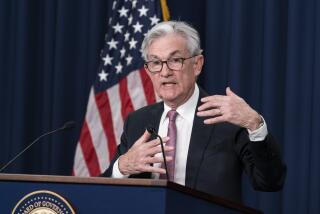Mexico inflation rises to 4.95%
MEXICO CITY — Rising food prices drove inflation in Mexico to an annualized rate of 4.95% in May, the highest level in nearly 3 1/2 years, according to data released Monday by the nation’s central bank.
It’s the fourth consecutive monthly increase and a bigger jump than analysts had predicted. The rate now stands well above the nation’s 3% long-range inflation target, and for the last two months, it has hovered in the 4.5%-to-5% upper limit of what the government considers acceptable in the short run.
Mexico’s poor, who dedicate the biggest share of their income to food, are feeling the squeeze most acutely. Inflation for what the government considers the basic basket of staples hit 5.68% in May, as cooking oil, rice, corn tortillas and beans all posted hefty increases.
Mexican President Felipe Calderon recently boosted cash payments to families enrolled in the nation’s largest anti-poverty program to help them cope with soaring grocery bills.
The latest price figures are putting the Bank of Mexico in a tough spot. Pressure is building to raise interest rates to keep inflation in check. But doing so could put the brakes on economic growth, which so far has held up fairly well in the face of a slowdown in the U.S., Mexico’s largest trading partner.
Calderon has stated that he wants interest rates lowered so that domestic businesses and consumers can keep making purchases to keep the economy rolling.
But easier credit could fuel even higher inflation, a haunting specter for millions of Mexicans. Less than a decade ago, Mexico was ravaged by annualized inflation approaching 20%. The loss of purchasing power was devastating to the economy.
Some analysts say Mexico’s central bank could hike interest rates this year if consumer prices continue to surge. That would be a sign that the independent Bank of Mexico is more concerned about the consequences of inflation than invoking Calderon’s wrath.
Mexico’s overnight lending rate is currently 7.5%, and that’s the figure everyone is keying on to see if the central bank will raise it. It’s equivalent to the U.S. federal funds rate, which is now at 2%.
“The upside risks to inflation are larger than the downside risks to growth stemming from the downshift of activity in the U.S.,” said Alberto Ramos, head of emerging markets research for Goldman Sachs & Co. in New York.
--
More to Read
Sign up for Essential California
The most important California stories and recommendations in your inbox every morning.
You may occasionally receive promotional content from the Los Angeles Times.










